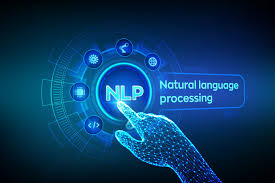As a layman, it can be very overwhelming to think about artificial intelligence and all of the terms associated with it, like deep learning, machine learning, and natural language processing.
These new-age technologies are more complicated than anything we have previously seen. Due to this confusion, people tend to use these terms interchangeably, causing even more confusion with all the concepts of data science and artificial intelligence.

Deep learning and NLP do fall under the category of artificial intelligence, but the difference between them is huge. So, let us try to understand the differences between these two, and how they associate with each other.
So what exactly is deep learning?
Deep learning is a branch of machine learning that simulates the human brain’s functioning using artificial neural networks (ANN). It is termed as deep learning because millions of neurons are stacked in multiple layers in this interconnected web.
A neural network is fed with large volumes of data that are supposed to run through the neurons. Each neuron has a function of activation. The neurons get activated when a specific threshold is reached, the values of which can be disseminated throughout the neural network. This is how neural networks function.
Basically, ANNs are designed to imitate the biological brain in terms of communication and processing approaches. While the human brain is dynamic and analogue, ANNs are static. The focus of deep learning is to train large neural networks on voluminous amounts of data.
Deep learning has a very strong opportunity to grow right now, as the global data generation is extremely high. This happens because deep learning performs better as more data is fed into the neural networks.
Deep learning is used for NLP, Object Recognition, Predictive Analysis, and others.
Now, coming to natural language processing (NLP). What is NLP? NLP is a specialization of AI that aims to illustrate and understand the cognitive mechanisms associated with the generation of human languages.
NLP aims to bridge the gap between human languages and computers by understanding it. The focus of NLP is to analyze and process large amounts of natural language data in textual or verbal forms. NLP is a combination of artificial intelligence, computer science, and linguistics.
Amazing things can be achieved by using NLP, like analyzing sentiments, summarizing texts, chatbots and smart virtual assistants.
What are the applications of these technologies?
Several industries use deep learning technologies, including healthcare, automotive, BFSI, retail and the oil and gas industry.
On the other hand, NLP is deeply rooted in linguistics. Some of the most popular uses of natural language processing in deep learning include spell check, paraphrase detection, speech recognition, character recognition and language generation. These are very important features for chatbots, spelling and grammar checkers and personal assistants.
Both deep learning and NLP are parts of the wider field of artificial intelligence. NLP changes and redefines how well machines can understand human language, and deep learning is enriching the application of NLP. NLP systems can be made more accurate with the use of deep learning and vector mapping techniques without using human intervention.
Vikas Sudan is the SEO Manager at whisskers marketing, an United States digital marketing agency. An expert in Digital Marketing and Blogging, He never misses an opportunity to spread the knowledge and share the industry’s best practices. Vikas Sudan is present on social media like Facebook, Instagram, LinkedIn, Pinterest & Twitter also.